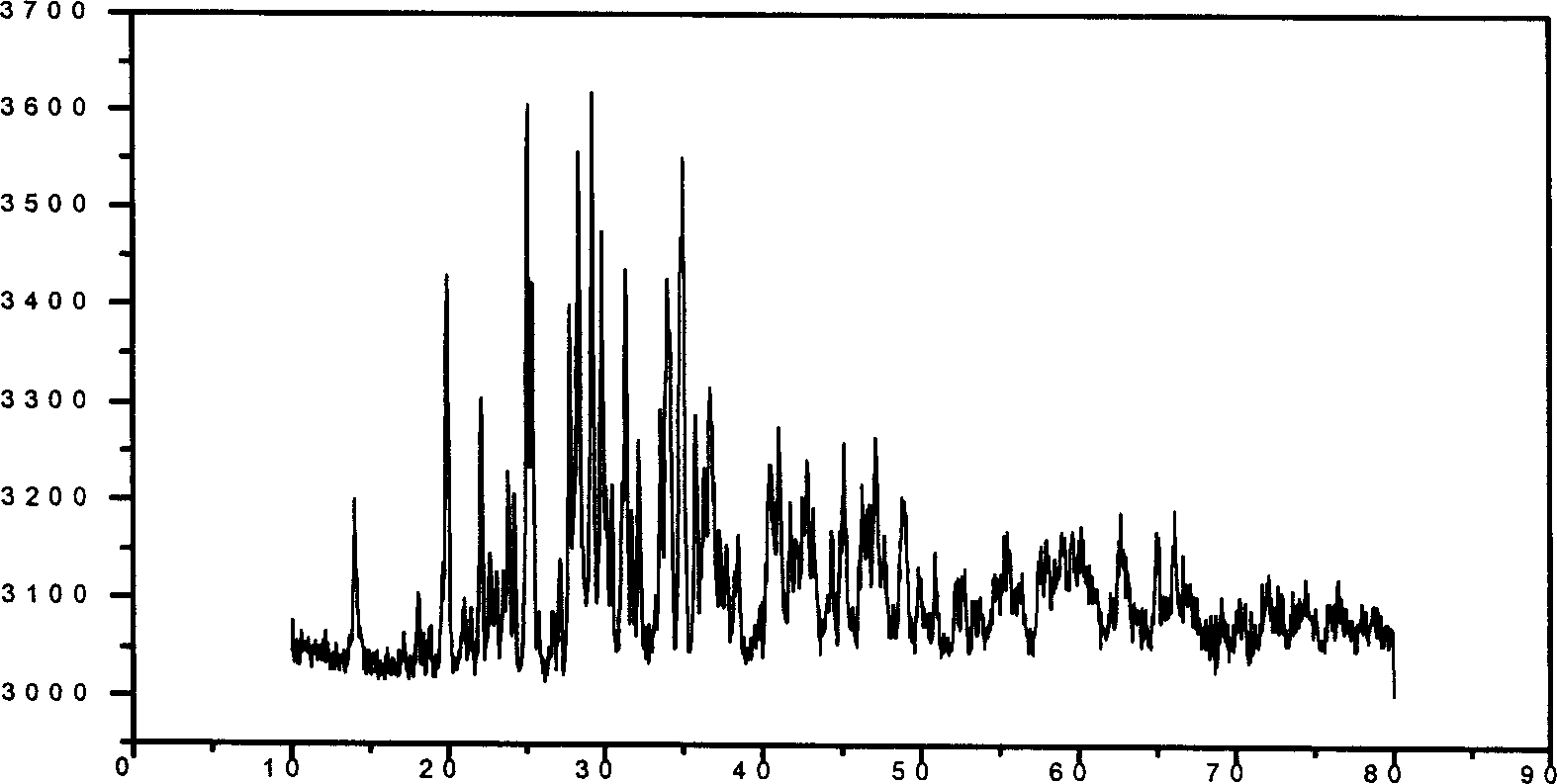Preparation of visible light -initiated nano superlong-persistence luminescent materials
A long afterglow luminescence and visible light technology, applied in the field of materials, can solve the problems of industrial production of ultra-long afterglow nano-rare earth luminescent materials excited by visible light, lack of powder, and large particle size of powder.
- Summary
- Abstract
- Description
- Claims
- Application Information
AI Technical Summary
Problems solved by technology
Method used
Image
Examples
Embodiment 1
[0058] Ultra-long afterglow luminescent material (sample 1)
[0059] Take strontium nitrate (0.025mol), aluminum nitrate (0.0925mol), europium nitrate (0.000385mol), dysprosium nitrate (0.00077mol), and dissolve them in 200 ml of 6mol / L HNO 3 , stir to make it fully mixed to form a mixture solution.
[0060] Ammonium carbonate (0.2 mol) precipitant was added and allowed to stand for 30 minutes, resulting in precipitation.
[0061] The resulting precipitate was placed in a reducing atmosphere (such as 3% H 2 -97%N 2 ) to 800° C., and then kept at this temperature for 3.5 hours to obtain the ultra-long afterglow luminescent material (sample 1) of the present invention.
Embodiment 2-4
[0063] Ultra-long afterglow luminescent material (sample 2-4)
[0064] According to the similar method described in Example 1, the difference lies in the use of each combination content and preparation conditions shown in Table 1, as a result, the ultra-long afterglow luminescent material of the present invention (sample 2-4) was obtained.
[0065] Example 1
Embodiment 5
[0067] performance measurement
[0068] In this example, the dimensions and properties of samples 1-4 prepared in Example 1 were tested.
[0069] (a) Average particle size and composition
[0070] The average particle size was determined by TEM electron microscope. Determination of its composition by XRD powder diffraction method
[0071] TEM results as figure 1 shown. The results showed that the particle diameters of the samples all reached the nanometer level, and the average particle diameter was 30-60nm. (Note: figure 1 Shown is a particle diameter photograph of sample 1).
[0072] XRD powder diffraction shows as figure 2 shown. The results show that its composition is Sr 4 al 14 o 25 :Eu 2+ , Dy 3+ , wherein Sr: 2Al: Eu: Dy is calculated from the amount of each raw material in Table 1.
[0073] (b) Afterglow performance
[0074] Measure the luminous performance of sample 1-4 with routine Cary Eclipse method, the afterglow intensity (mcd / m2) of each sample ...
PUM
| Property | Measurement | Unit |
|---|---|---|
| particle size | aaaaa | aaaaa |
| wavelength | aaaaa | aaaaa |
| strength | aaaaa | aaaaa |
Abstract
Description
Claims
Application Information
 Login to View More
Login to View More - R&D
- Intellectual Property
- Life Sciences
- Materials
- Tech Scout
- Unparalleled Data Quality
- Higher Quality Content
- 60% Fewer Hallucinations
Browse by: Latest US Patents, China's latest patents, Technical Efficacy Thesaurus, Application Domain, Technology Topic, Popular Technical Reports.
© 2025 PatSnap. All rights reserved.Legal|Privacy policy|Modern Slavery Act Transparency Statement|Sitemap|About US| Contact US: help@patsnap.com



